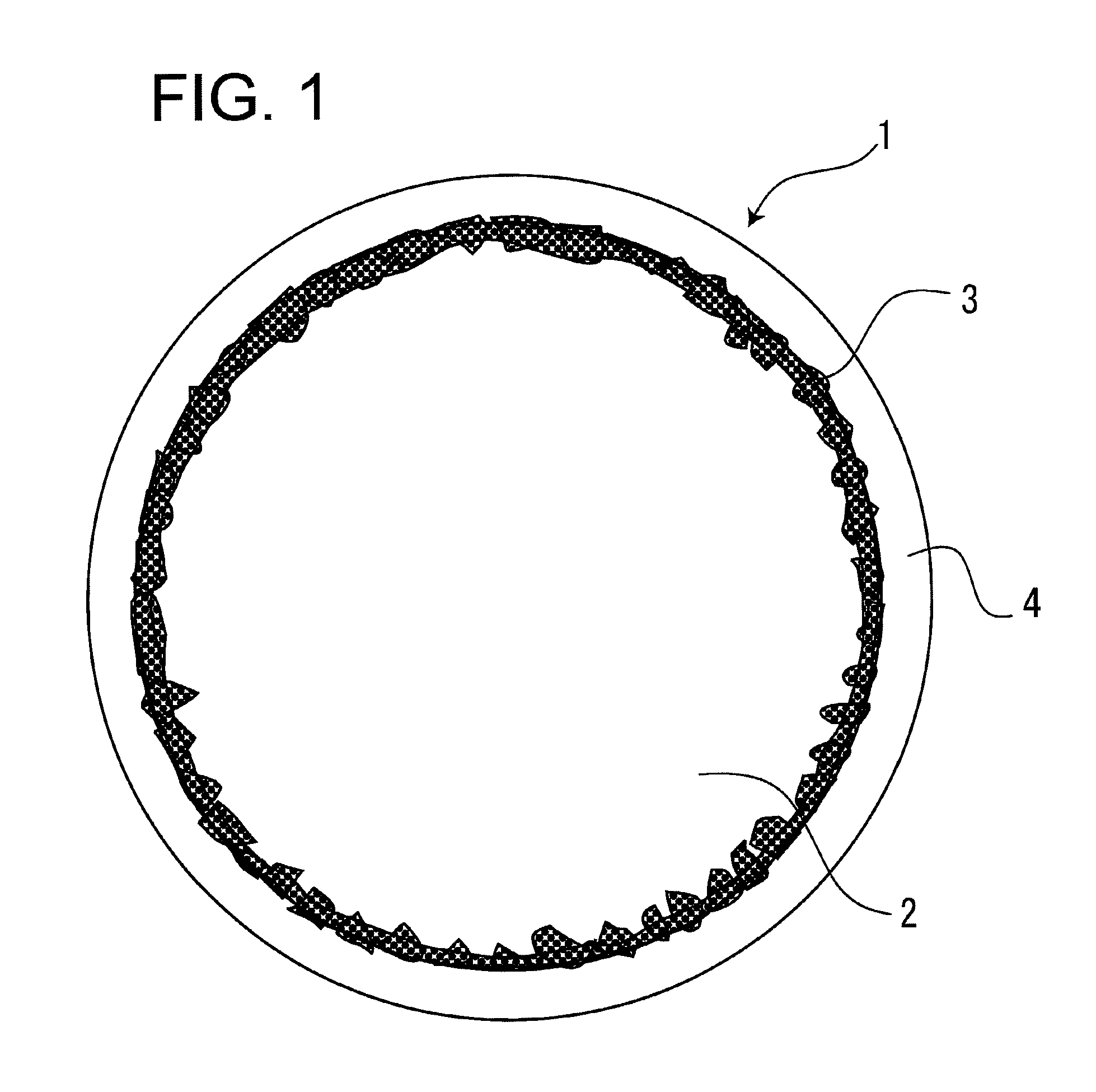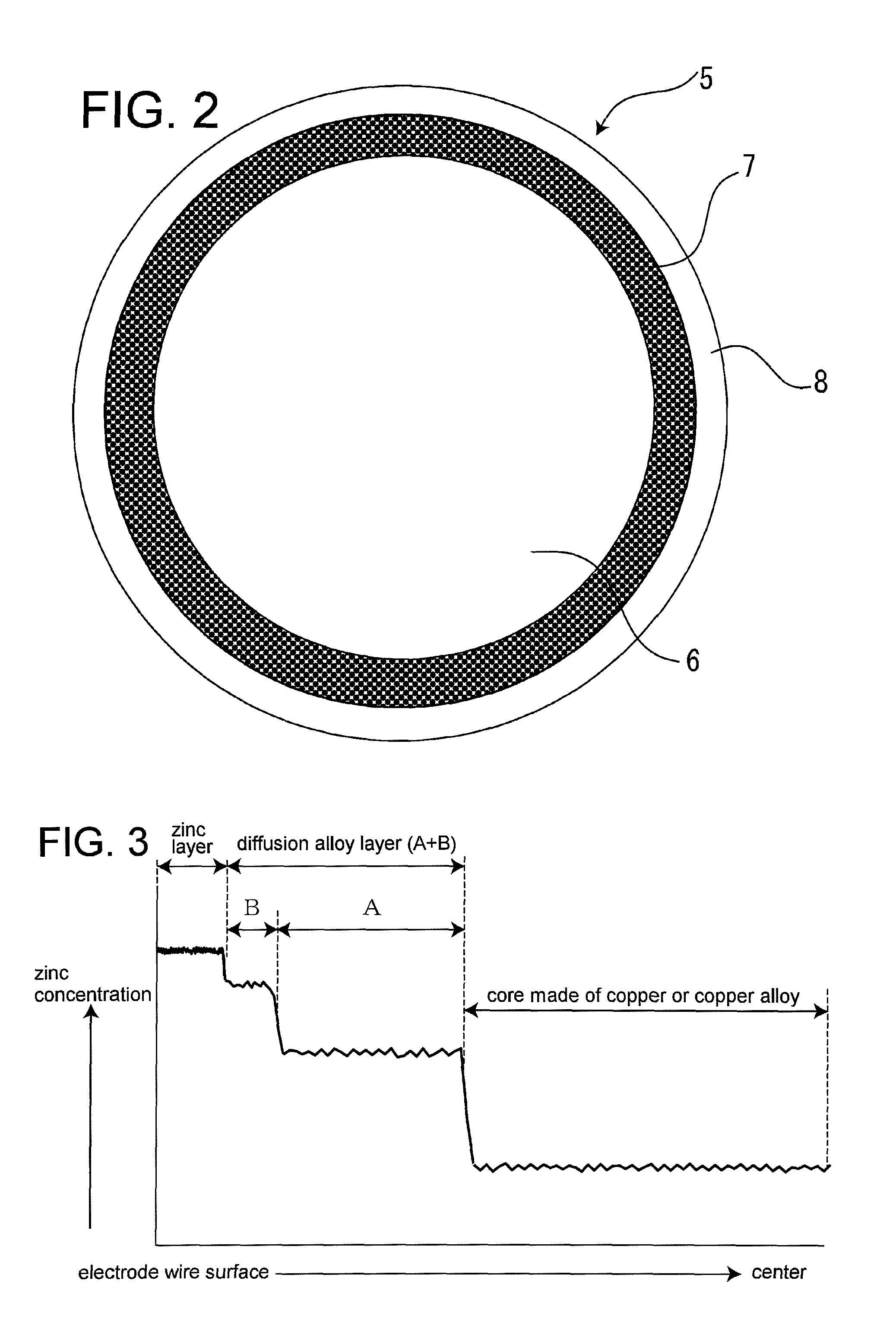Electrode wire for wire electrical discharge machining, method for manufacturing the same, and method for electrical discharge machining using the same
a technology of electrical discharge machining and electrode wire, which is applied in the direction of electrical-based machining electrodes, manufacturing tools, transportation and packaging, etc., can solve the problems of poor surface finish of workpieces, contact area, and inability to manufacture, so as to prevent the degradation of machining accuracy
- Summary
- Abstract
- Description
- Claims
- Application Information
AI Technical Summary
Benefits of technology
Problems solved by technology
Method used
Image
Examples
embodiment
[0083]Embodiment of the present invention will be described below.
[0084]FIG. 7 schematically shows a facility that performs the method for manufacturing the electrode wire 1 for wire electrical discharge machining according to the present invention. A wire-drawing apparatus 13 for the galvanized base wire 5 shown in FIG. 2 and annealer 14 can be arranged before a take-up apparatus 15 as shown in FIG. 7 or outside the facility so as to draw a already taken-up wire.
[0085]Controlling the temperature of hot-dip galvanizing and dipping time can determine the thickness of the copper-zinc alloy layer 7, which is a diffusion alloy layer, and the zinc layer 8. The tendencies of thickness variations will be shown below.
1. Diffusion Alloy Layer (Copper-Zinc Alloy Layer)
[0086]a. The diffusion alloy layer becomes thinner when the dipping time is shorter as long as the temperature is the same.
[0087]b. The diffusion alloy layer becomes thinner when the temperature is lower as long as the dipping t...
PUM
| Property | Measurement | Unit |
|---|---|---|
| temperature | aaaaa | aaaaa |
| diameter | aaaaa | aaaaa |
| temperature | aaaaa | aaaaa |
Abstract
Description
Claims
Application Information
 Login to View More
Login to View More - R&D
- Intellectual Property
- Life Sciences
- Materials
- Tech Scout
- Unparalleled Data Quality
- Higher Quality Content
- 60% Fewer Hallucinations
Browse by: Latest US Patents, China's latest patents, Technical Efficacy Thesaurus, Application Domain, Technology Topic, Popular Technical Reports.
© 2025 PatSnap. All rights reserved.Legal|Privacy policy|Modern Slavery Act Transparency Statement|Sitemap|About US| Contact US: help@patsnap.com



